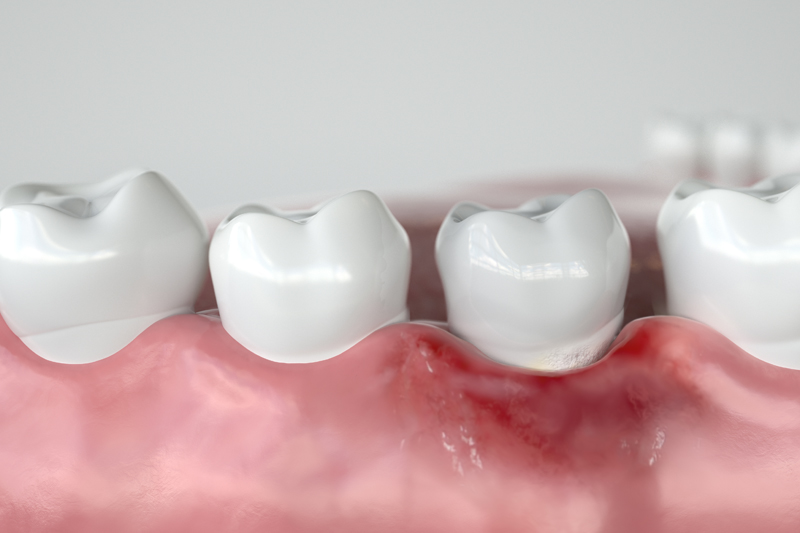
Periodontal Disease
What is periodontal disease?
Periodontal disease is also known as gum disease is a bacterial infection in the gums and bone that support your teeth. There are two main types. If only the gum is infected this is called gingivitis and with treatment this is reversible. If the gum and the jawbone is infected this is called periodontitis and is more serious. The plaque bacteria grow underneath the gum and start breaking down the attachment of the tooth to the gum and jaw bone. This leads to the formation of a space between the tooth and the gum/bone called a periodontal pocket.
Initial warning signs for periodontal disease can be bleeding, red and swollen gums, or bad breath. You may find that your gums bleed during brushing.
If left untreated periodontitis can ultimately lead to the loosening and potential loss of the teeth. A periodontist has special training in detecting and measuring the extent of the periodontal pocketing and whether teeth can still be saved.
Periodontitis is a disease that may pose a risk to the general health of the patient, especially for Cardio-Vascular disease and Diabetes. The treatment of periodontitis is never a once-off treatment and requires lifelong monitoring and regular re-treatment sessions to prevent tooth loss.
Treatment
Our periodontal team is truly passionate about the treatment of oral disease and the prevention of tooth loss. We have vast experience in providing the best possible care to patients who have periodontal disease.
The goal of our periodontitis treatment is to thoroughly clean the pockets around teeth and prevent damage to the surrounding bone. While our treatments are very effective, you still need to adopt a daily routine of good oral hygiene, manage health conditions that may impact dental health and stop or minimize tobacco use for the best chance of successful treatment.
Our treatment options include:
Non-surgical: Scaling and root planing: Scaling and root planing is a thorough cleaning of the root surfaces to remove plaque and calculus (tartar) build-up above and below the gum line. Local antibiotics can be used with scaling and root planing to help clear the infection.
Surgical (flap procedures): There are two main reasons for performing surgical treatment for gum disease, namely in cases where the non-surgical treatment proved to be inadequate for disease resolution and secondly in cases where the bone around teeth needs to be built up to save the teeth or restore the cosmetic damage done by the disease. During this procedure, we make tiny incisions into your gum and lift a section of gum tissue, exposing the roots for more effective access for root planing and scaling. Since periodontitis often causes bone loss, it may be necessary to recontour and build up the underlying bone before the gum tissue is put back in place. After you heal, it will be easier to clean these areas and maintain healthy gums.
Do I have periodontal disease? Periodontal disease may progress painlessly, producing very few obvious signs, even in the later stages of the disease. Although the symptoms of periodontal disease can be subtle, the condition is not entirely without warning signs. Some symptoms include:
- Gums that bleed during and after brushing
- Gums that are red, swollen or tender
- Persistent bad breath
- Receding gums
- The formation of deep pockets between gums and teeth
- Loose or shifting teeth
- Changes in the way teeth fit together when biting down
If you suspect that you have periodontal disease, contact us to schedule an appointment.
We will do an assessment to determine if you have periodontal disease and provide you with a treatment plan that will get your teeth and gums back to a healthy condition.
